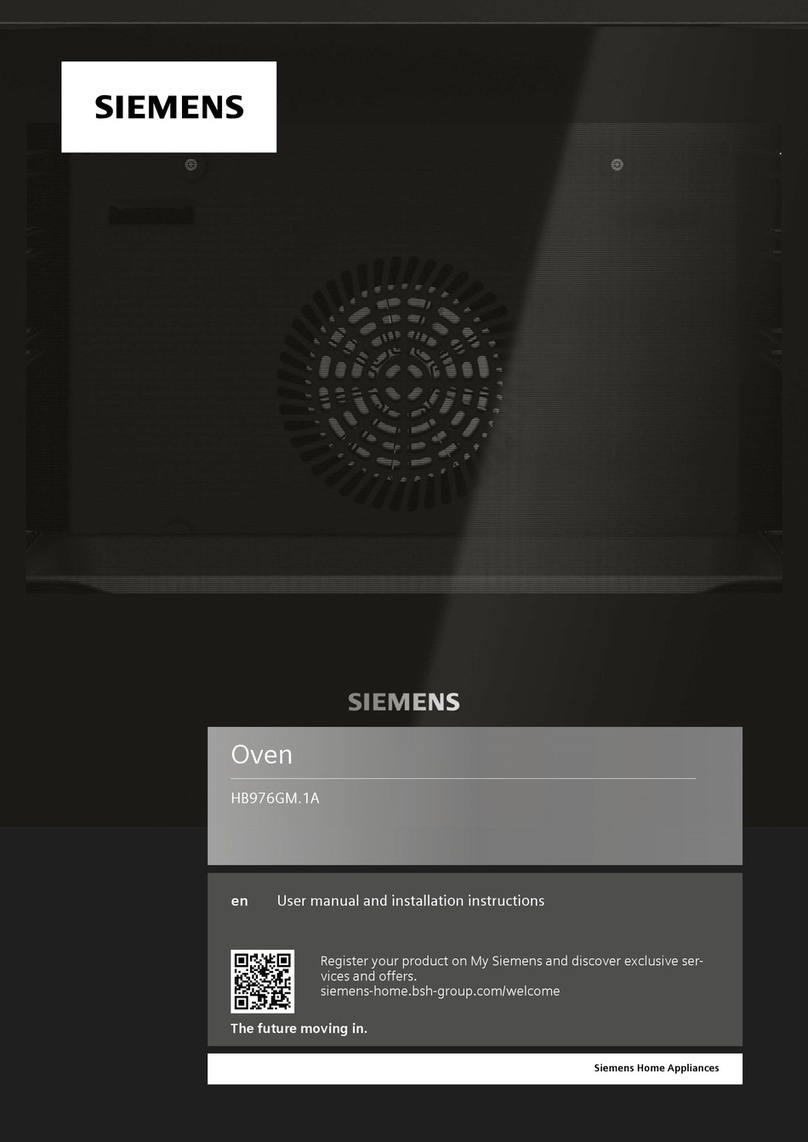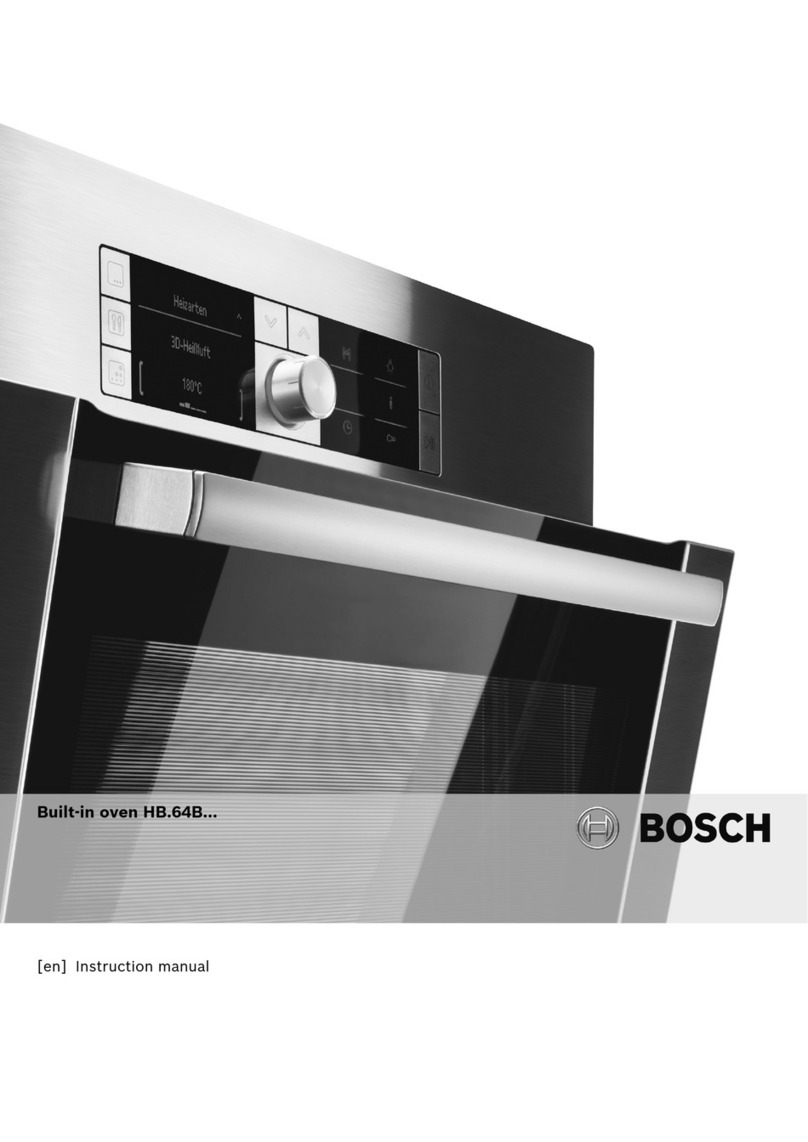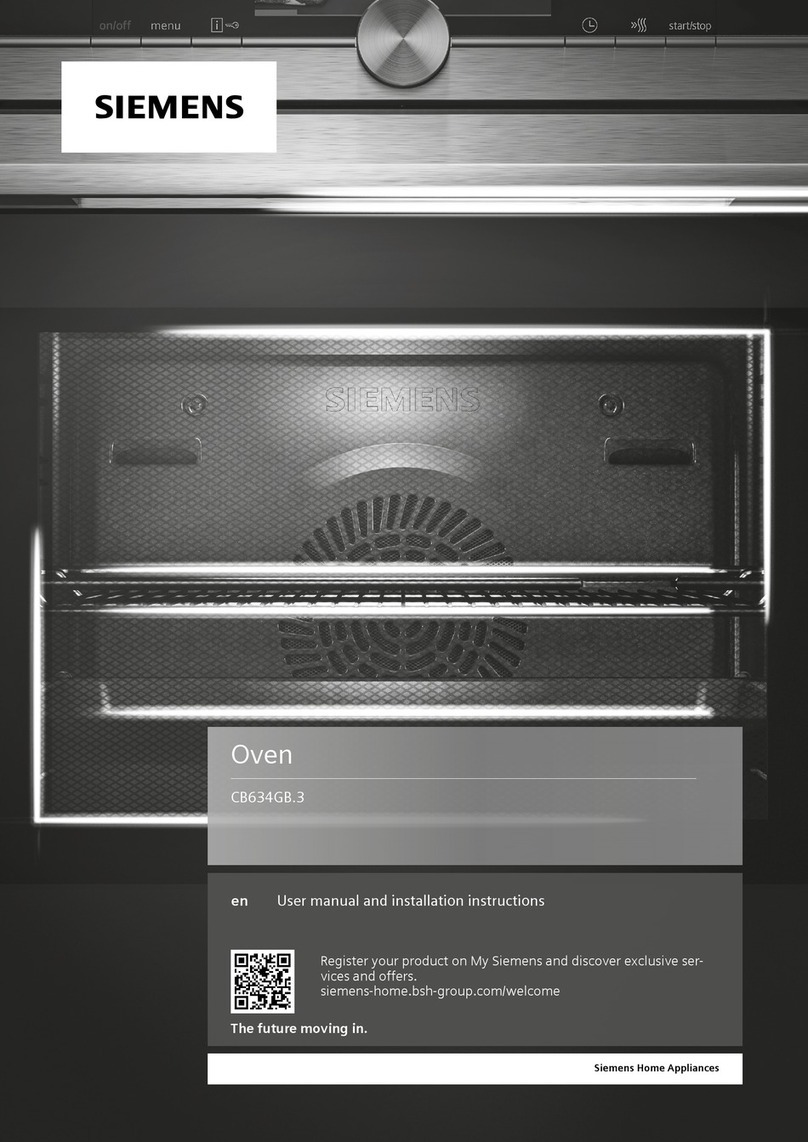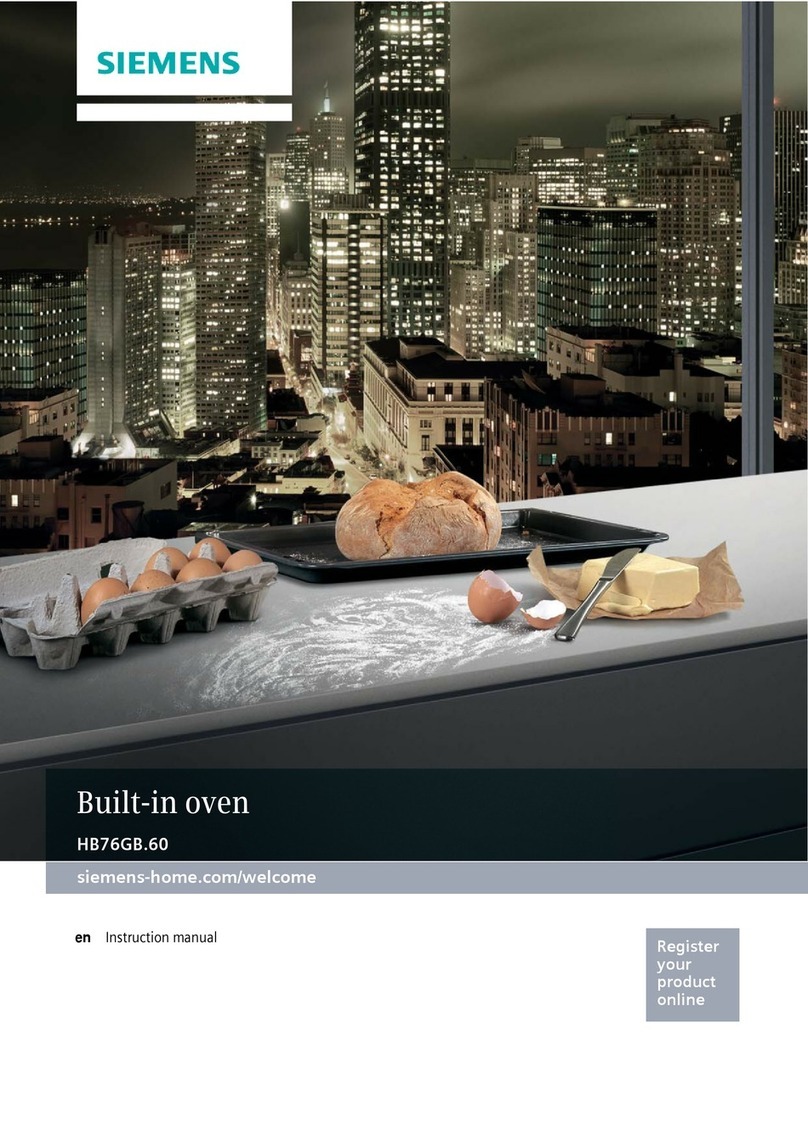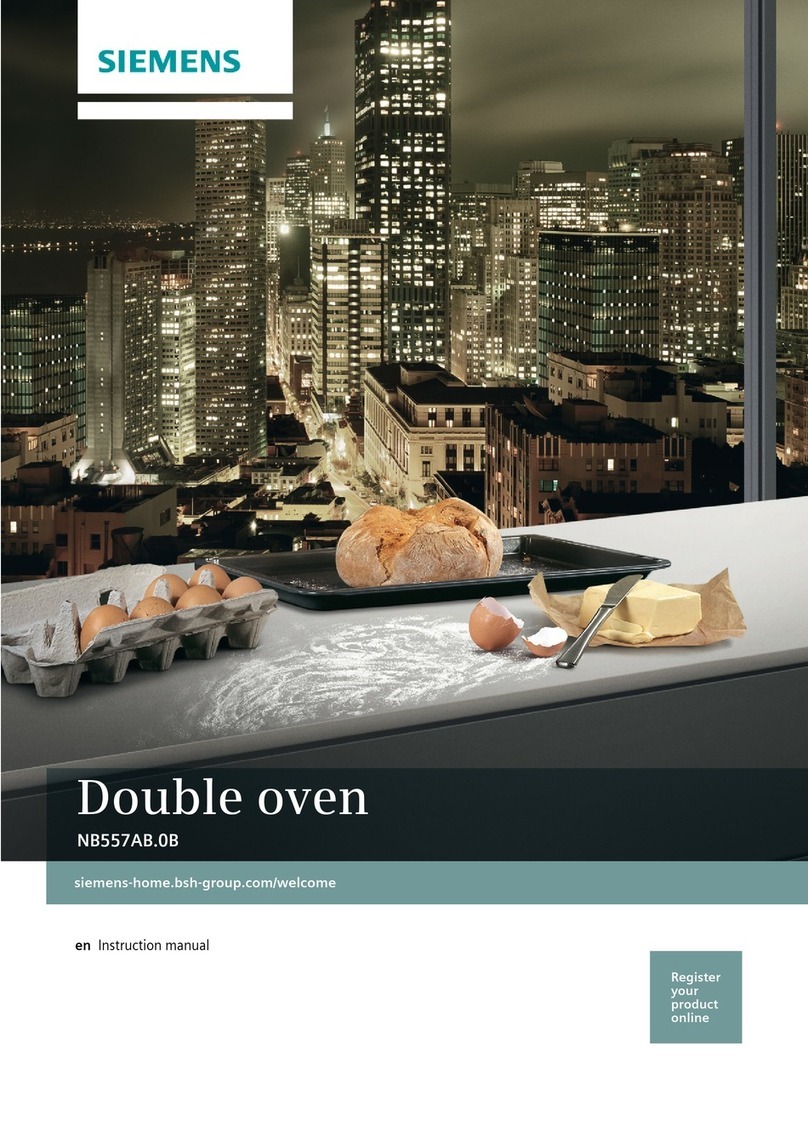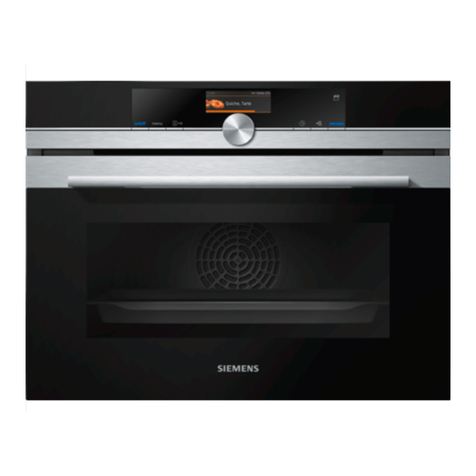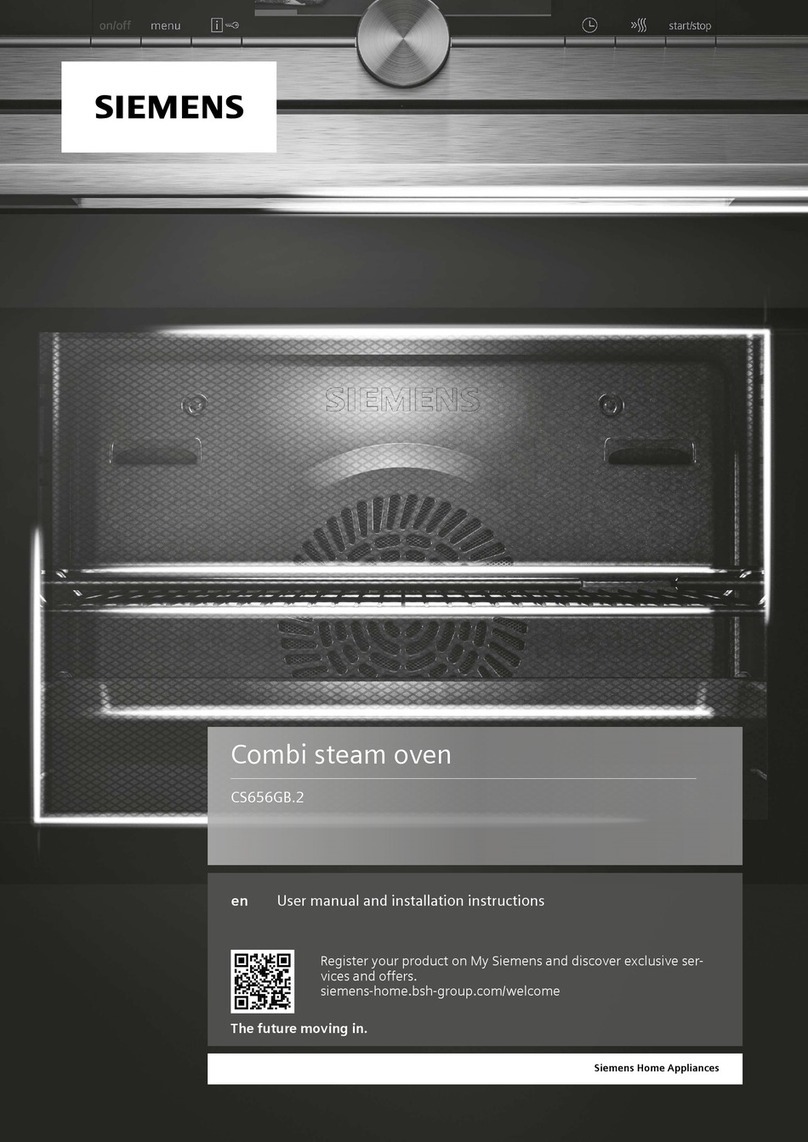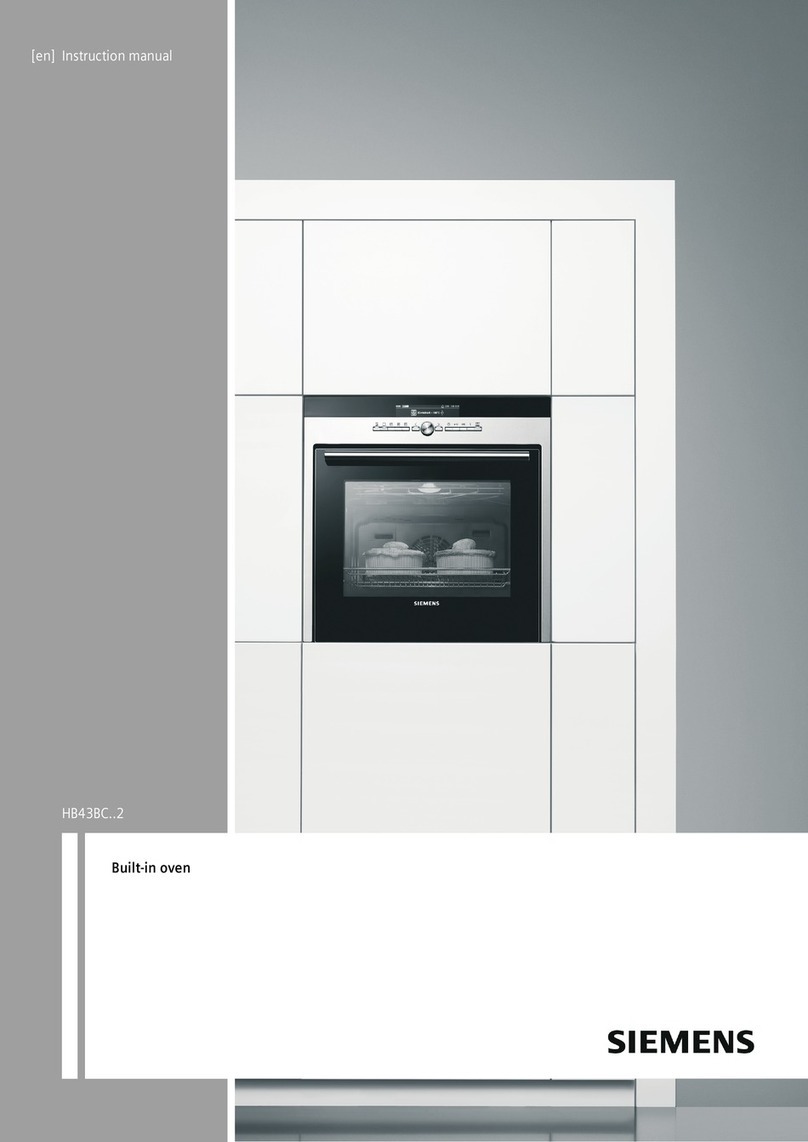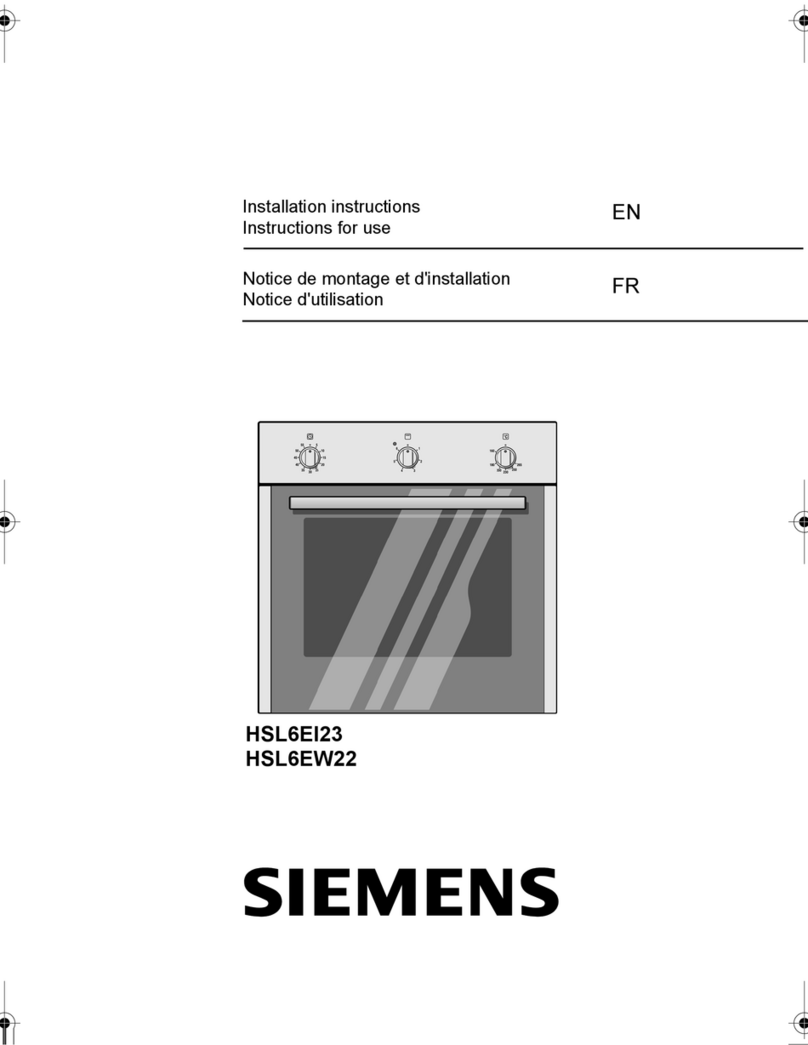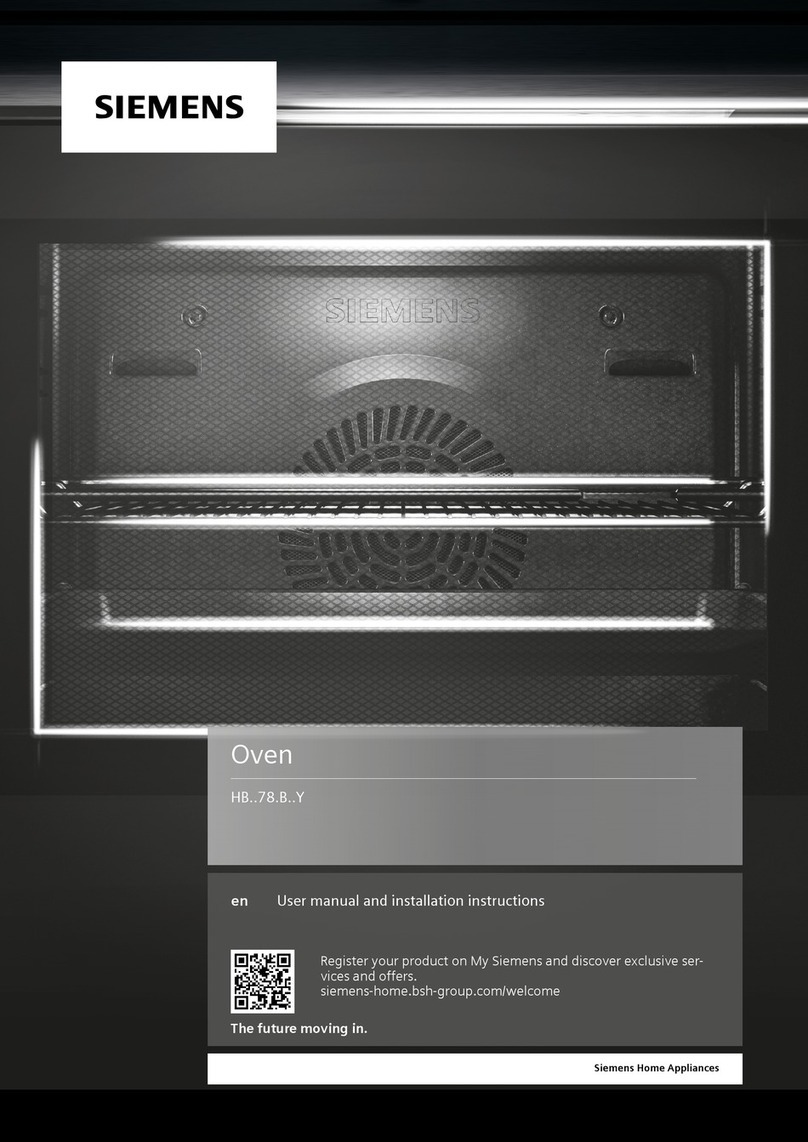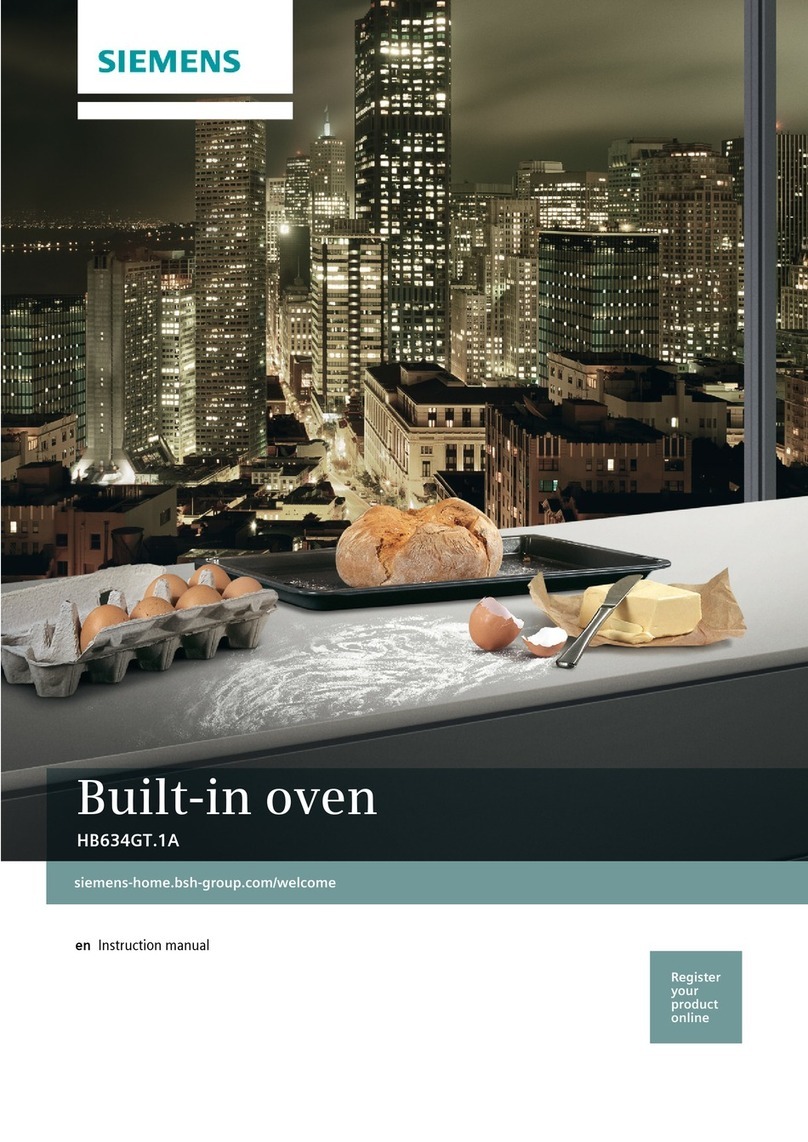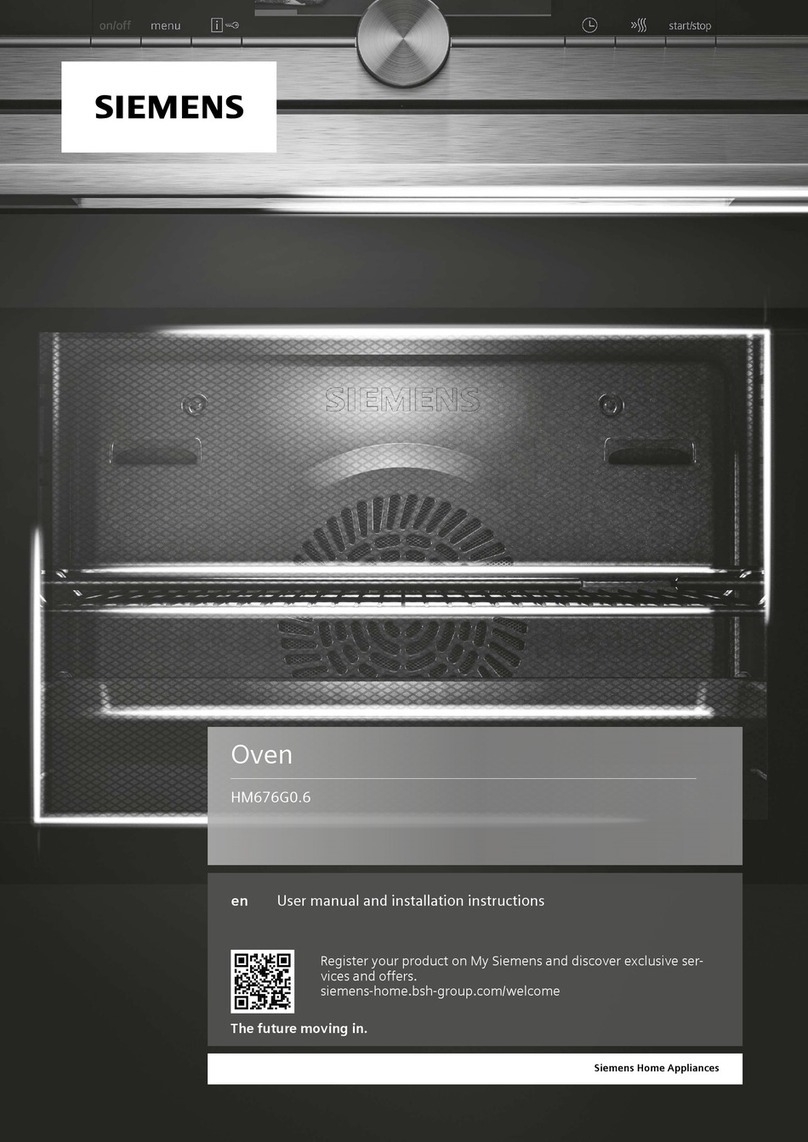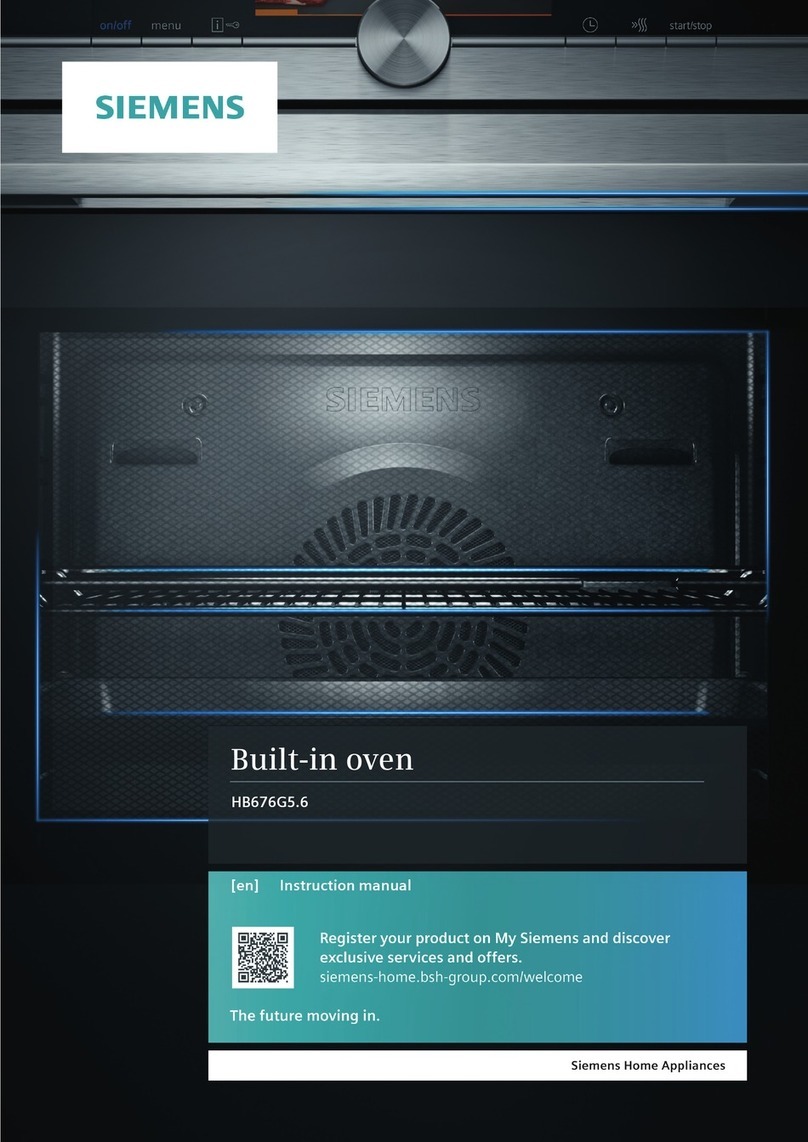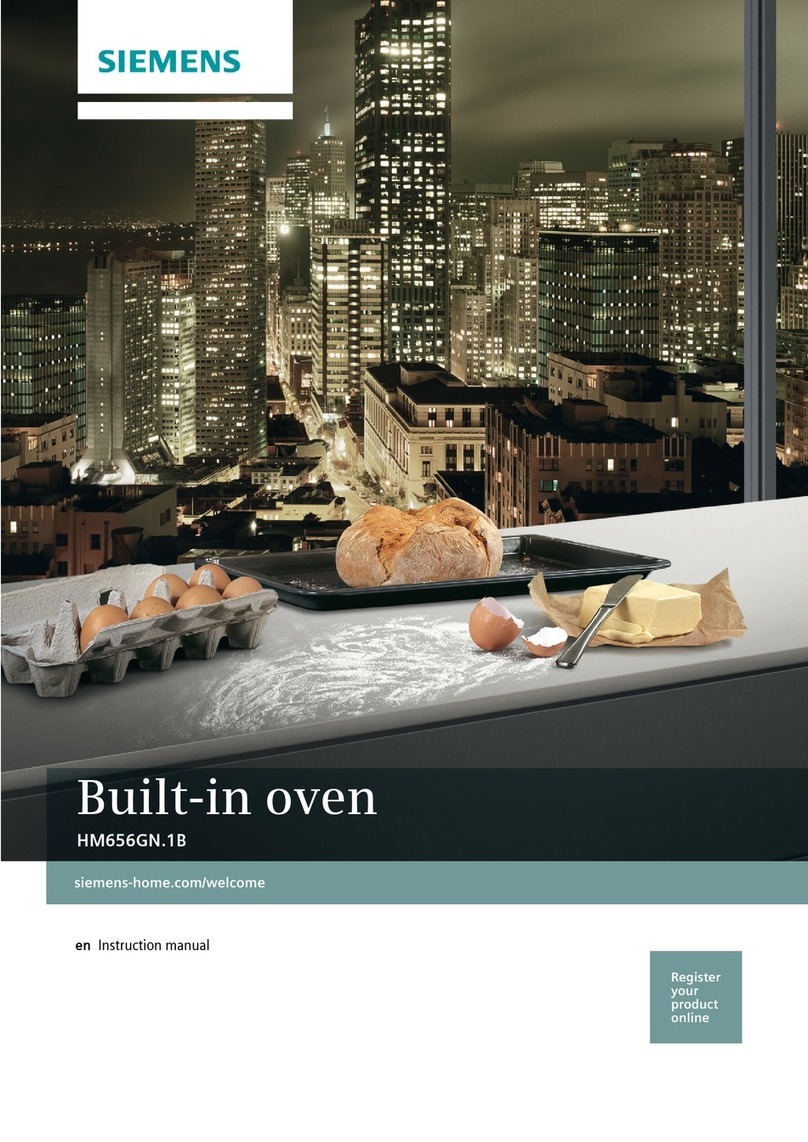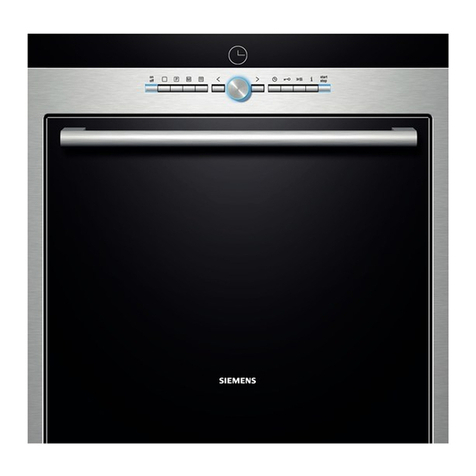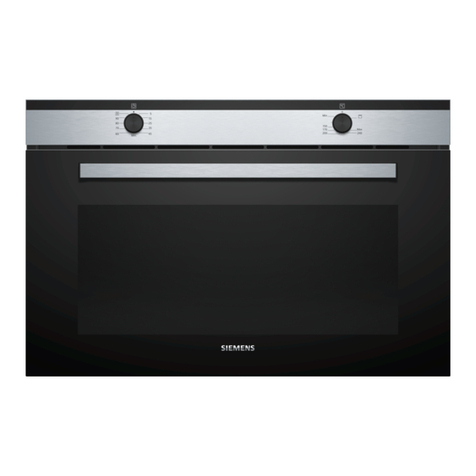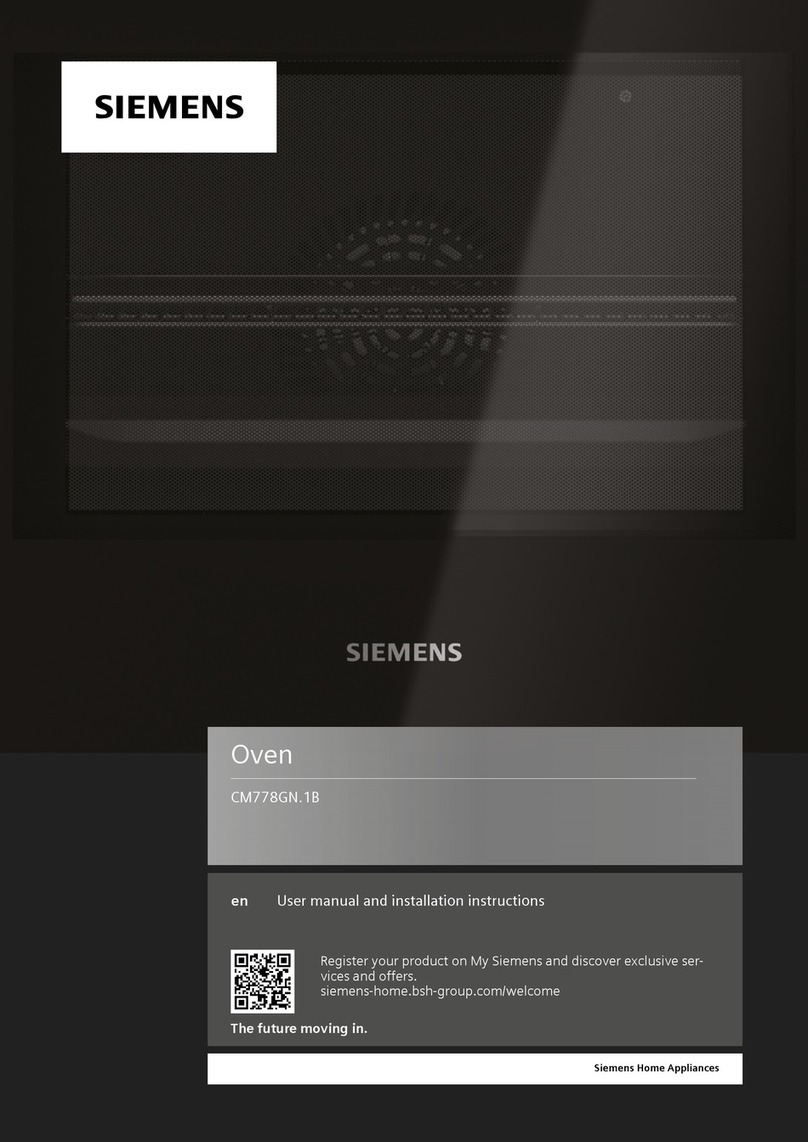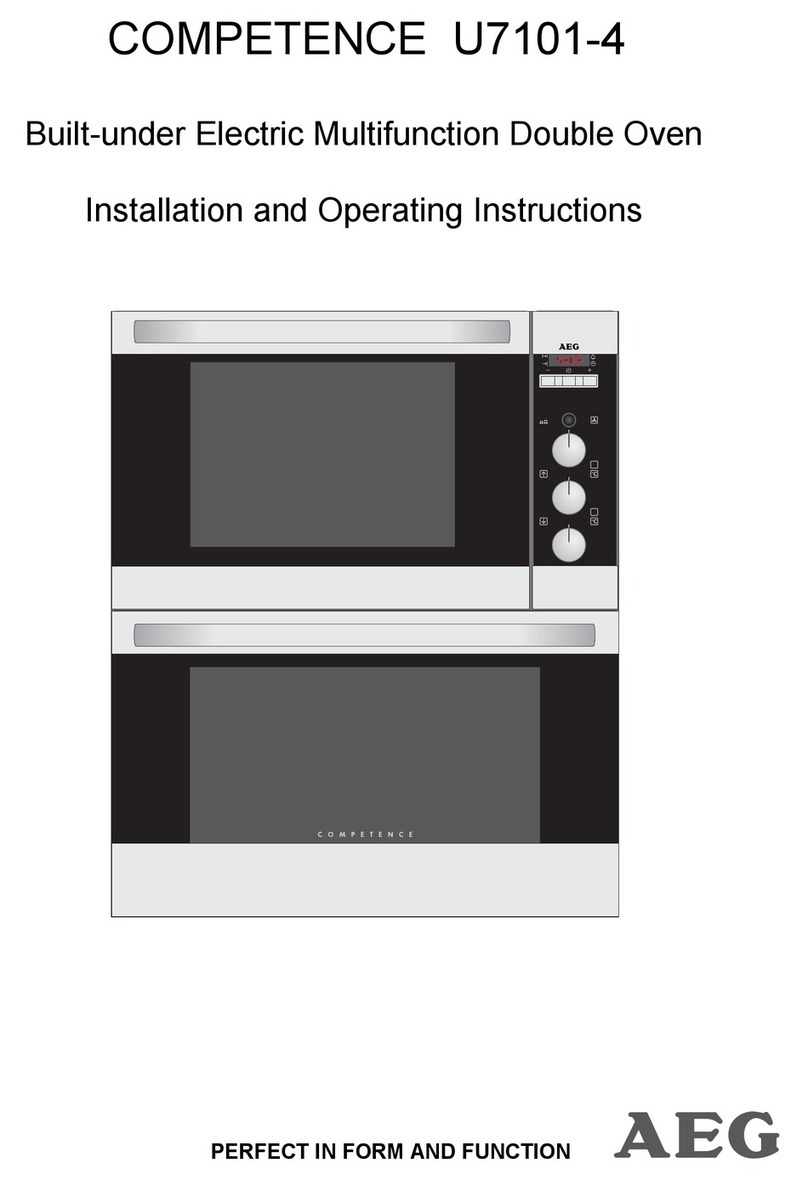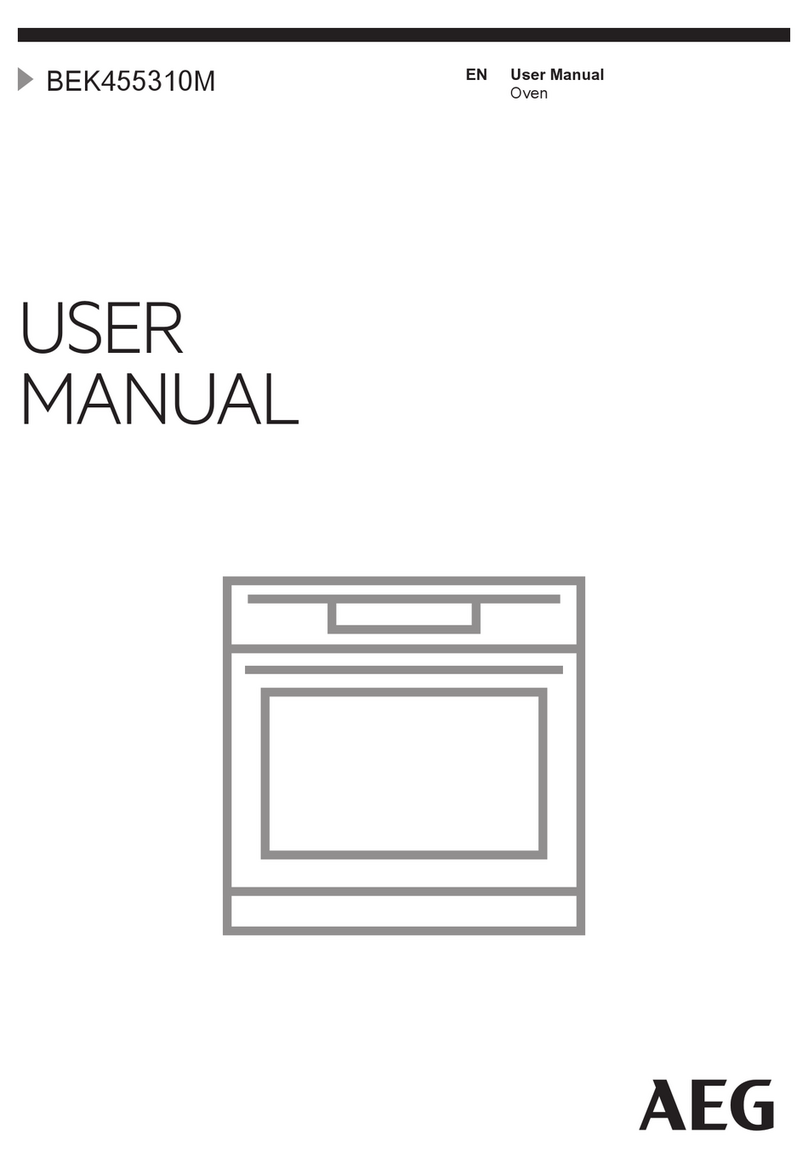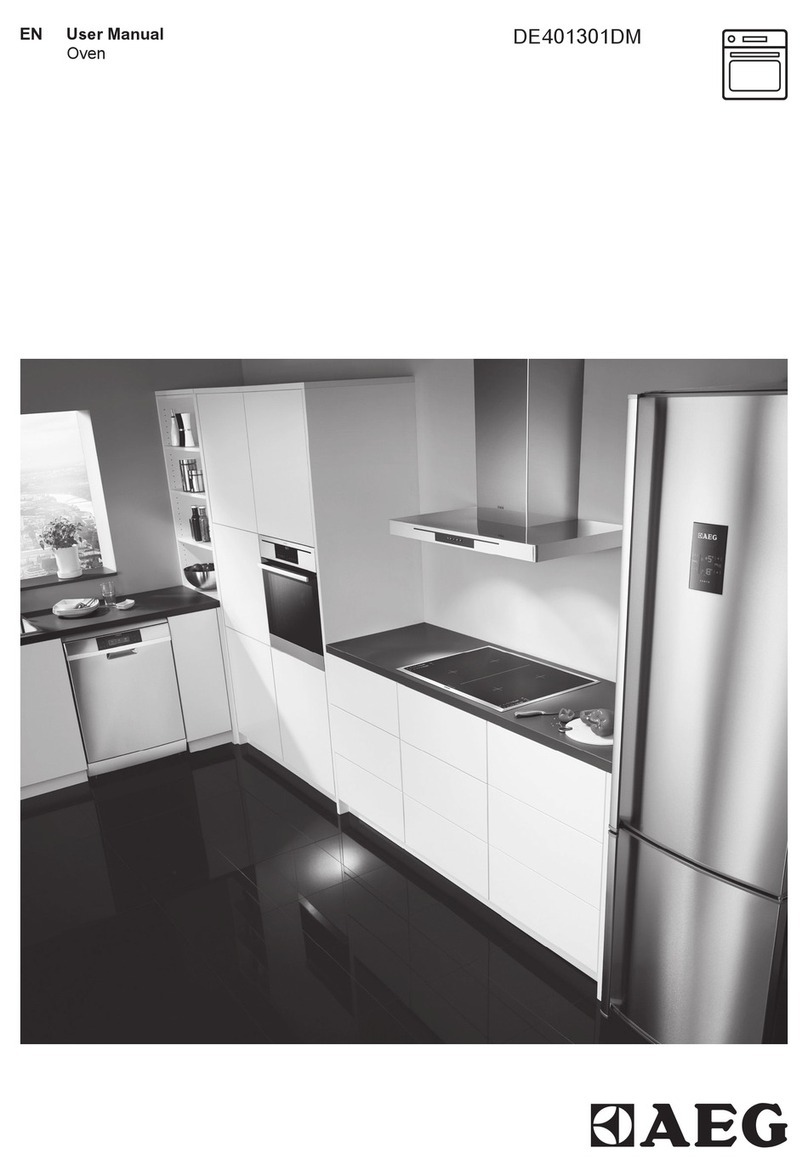2
ÚTable of contents
[en]Instructio nmanual
Important safety information .................................................... 2
Causes of damage .............................................................................4
Your new appliance ................................................................... 5
The control panel ................................................................................5
Buttons and display............................................................................5
Temperature selector .........................................................................5
Function selector.................................................................................5
Cooking compartment .......................................................................6
Your accessories ....................................................................... 6
Inserting accessories .........................................................................6
Optional accessories .........................................................................6
After-sales service products .............................................................7
Before using the appliance for the first time........................... 7
Setting the clock .................................................................................7
Heating up the oven...........................................................................7
Cleaning accessories.........................................................................7
Setting the oven ......................................................................... 7
Type of heating and temperature ....................................................7
The microwave ........................................................................... 8
Notes regarding ovenware................................................................8
Microwave power settings.................................................................8
Setting the microwave........................................................................8
Microwave combi operation...................................................... 9
Setting Microwave Combi operation ...............................................9
1, 2, 3 series of operations........................................................ 9
Setting a series of operations ..........................................................9
Setting the time-setting options ............................................... 9
Timer .................................................................................................. 10
Cooking time .................................................................................... 10
End time............................................................................................. 10
Clock .................................................................................................. 11
Childproof lock......................................................................... 11
Switching on the childproof lock................................................... 11
Switching off the childproof lock................................................... 11
Childproof lock with automatic programmes ............................. 11
Changing the basic settings................................................... 12
Automatic switch-off ................................................................12
Care and cleaning.....................................................................12
Cleaning agents ............................................................................... 13
Cleaning the glass cover ............................................................... 13
Cleaning the glass panels ............................................................. 14
Malfunction table ......................................................................15
Malfunction table.............................................................................. 15
Replacing the oven light bulb ....................................................... 15
Replacing the door seal ................................................................. 16
After-sales service....................................................................16
E number and FD number ............................................................. 16
Energy and environment tips ..................................................16
Saving energy................................................................................... 16
Environmentally-friendly disposal.................................................. 17
Automatic programmes ...........................................................17
Making settings ................................................................................ 17
Defrosting and cooking with the automatic programmes ....... 17
Tested for you in our cooking studio......................................19
Defrosting, heating up and cooking with the microwave......... 20
Microwave tips ................................................................................. 22
Cakes and pastries ......................................................................... 22
Baking tips ........................................................................................ 24
Roasting and grilling ....................................................................... 24
Tips for roasting and grilling.......................................................... 27
Bakes, gratins, toast with toppings .............................................. 28
Convenience products.................................................................... 28
Test dishes ................................................................................29
Baking ................................................................................................ 29
Grilling................................................................................................ 29
Acrylamide in foodstuffs .........................................................30
Produktinfo
Additional information on products, accessories, replacement
parts and services can be found at www.siemens-home.com
and in the online shop www.siemens-eshop.com
: Important safety information
Read these instructions carefully. Only then
will you be able to operate your appliance
safely and correctly. Retain the instruction
manual and installation instructions for
future use or for subsequent owners.
This appliance is only intended to be fully
fitted in a kitchen. Observe the special
installation instructions.
Check the appliance for damage after
unpacking it. Do not connect the appliance
if it has been damaged in transport.
Only a licensed professional may connect
appliances without plugs. Damage caused
by incorrect connection is not covered
under warranty.
This appliance is intended for domestic use
only. The appliance must only be used for
the preparation of food and drink. The
appliance must be supervised during
operation. Only use this appliance indoors.
Always slide accessories into the cooking
compartment correctly. See "Description of
accessories in the instruction manual.
This appliance may be used by children
over the age of 8 years old and by persons
with reduced physical, sensory or mental
capacity or by persons with a lack of
